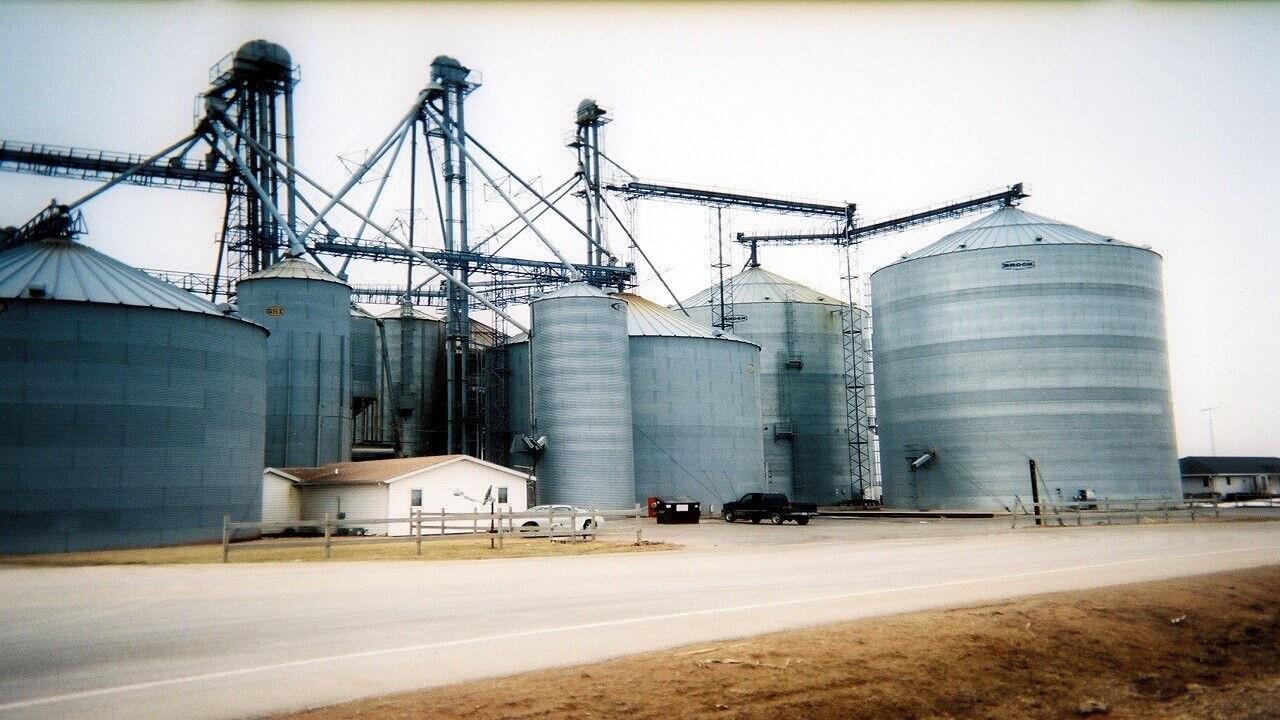
Cassava Harvesting and Processing
October 1, 2024, 4:29 pm
One of the major positive attributes of cassava is that it does not have a specific harvesting period. Roots may be harvested any time between six months and two years after planting.

Cassava Harvesting and Processing
During periods of food shortage, they can be harvested whenever needed, often one plant – or even one root – at a time. For human consumption, harvesting usually takes place at about 8 to 10 months; for industrial uses, a longer growing period generally produces a higher root and starch yield.
Once harvested, roots can be consumed directly by the farm household, fed to livestock or sold for processing into a wide array of value-added products, ranging from coarse flour to high-tech modified starch gels. The root is not the only part of the plant that can be put to good use. In Africa, cassava leaves are cooked as a vegetable. In many countries, the green part of the upper stem, including leaves and petioles, are fed to cattle and buffaloes, while the leaf-blades are fed to pigs and chickens.

[If you want to know about the business of cassava farming and processing, purchase our cassava farming business plan that will show you how to farm cassava and process into flour, starch, gari and chips.]
In China, Thailand and Viet Nam, fresh leaves are used for raising silkworms. Stumps are burned as fuelwood, and woody stems are ground-up and used as a substrate for growing mushrooms.
Harvesting Cassava Roots and Plant Tops
Cassava roots are generally harvested by cutting off the stems about 20 cm above ground, then lifting the whole root system out of the ground by pulling on the stump. If the soil is too hard or the roots are too deep, it may be necessary to dig around the roots with a hoe, spade or pick to remove the soil, avoiding damage to the roots in the process.
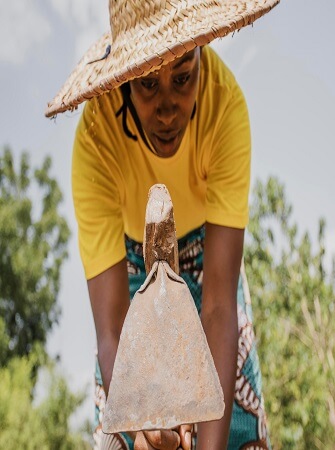
To harvest their cassava, Thai farmers have developed a metal tool that is attached to a pole and used as a lever. It works best in loose or light-textured soils. In heavier soils, which can become very hard in the dry season, a harvesting blade attached to a tractor is sometimes used. The blade cuts through the soil just below the roots and the forward movement of the tractor pushes the root clumps to the surface. The roots are then cut from the stump and placed in baskets or sacks for transport.
[If you want to know about the business of cassava farming and processing, purchase our cassava farming business plan that will show you how to farm cassava and process into flour, starch, gari and chips.]
After the root harvest, plant tops are often left to dry on the ground and later incorporated in the soil to help maintain its fertility. However, farmers can greatly increase the total amount of cassava foliage available for feeding to animals by cutting the green tops every 2.5 to 3 months during the plant’s growth cycle. After each pruning, the remaining stems will sprout again and produce another crop of leaves within 2 to 3 months.
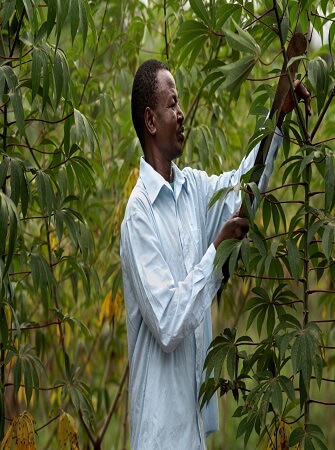
For maximum foliage production, cassava stakes should be planted with closer spacing, of about 60 x 60 cm. Young leaves harvested at regular intervals during the cassava growth cycle tend to have a higher protein and lower fibre content than those collected at the final root harvest, when plants are normally 11 to 12 months old. The younger leaves are more palatable and provide a higher quality feed. Similarly, leaf meal containing only leaf-blades has a higher protein and lower fibre content than meal that also contains petioles and green stems.
In an experiment in Thailand, total dry leaf yield was 710 kg per hectare when leaves were harvested only at the time of root harvest, at 11.5 months after planting. But the yield increased to 2.6 tonnes when leaves were cut five times during the same period. The total leaf protein yield also increased, from 170 kg with only one leaf harvest to 650 kg, similar to a good crop of soybeans. However, as the frequency of leaf cutting increased, the final root yield dropped, from around 40 tonnes per ha when leaves were harvested only at the time of the root harvest, to less than 25 tonnes when leaves were harvested a total of five times. Depending on the cost of labour and the relative prices of fresh roots and dry leaves, this system may or may not be economic.
Harvesting the plant tops 4 or 5 times during a one-year growth cycle also removes a large amount of nutrients – especially nitrogen –from the field, and would not be sustainable without the application of large amounts of mineral fertilizer to maintain soil fertility.
Cassava Post-Harvest Uses and Value Addition
Food for Direct Consumption
Young cassava leaves are regularly picked and cooked for human consumption in several African countries, notably Cameroon, the Democratic Republic of the Congo, Liberia and the United Republic of Tanzania. The tender leaves contain up to 25 percent protein, on a dry matter basis, and are a valuable source of iron, calcium, and vitamins A and C3. The essential amino acid content of cassava leaf protein is similar to that found in a hen’s egg. The market value of cassava leaves in areas where they are consumed is often higher than that of the roots, indicating that their sale contributes significantly to farm household incomes.
Cassava Leaves
Cassava leaves are prepared by removing the hard petioles, then pounding the blades and young petioles with a pestle and mortar, and boiling the resulting pulp for about 30 to 60 minutes. That process eliminates cyanogens and makes the leaves safe to eat. However, prolonged boiling also results in considerable loss of vitamin C.
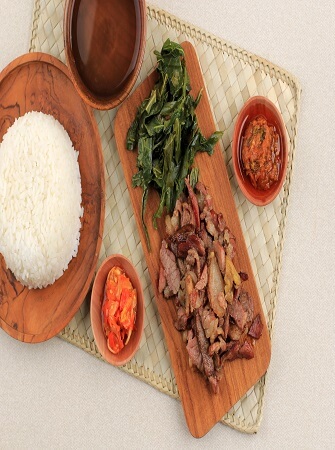
Cassava Roots
Cassava roots deteriorate rapidly and must be processed within a few days of harvesting. In many parts of Brazil, fresh roots are grated and the liquid, which contains much of the roots’ cyanide content, is pressed out. The semi-dry mash is then roasted to produce farinha, a coarse flour that is spread on many Brazilian dishes. In Africa, grated roots are fermented before being roasted on a hot plate to produce a granulated flour called gari, or sun-dried and milled into flour, which is mixed with water to produce a stiff dough called fufu.
Steaming is used in Côte d’lvoire and Benin to make another granulated cassava product, called attiéké. In the Democratic Republic of the Congo, pounded cassava flesh is wrapped in banana leaves and in Central Africa, tender young cassava leaves are regularly picked and cooked as a protein-rich post-harvest rains are heavy.
[If you want to know about the business of cassava farming and processing, purchase our cassava farming business plan that will show you how to farm cassava and process into flour, starch, gari and chips.]
Cassava Flour
High quality cassava flour (HQCF) is cassava flour that has not been fermented and can be used as an alternative to wheat flour and other starches in bread and confectionary. The processing of cassava roots into cassava flour involves peeling, washing, grating, pressing, disintegration,sifting, drying, milling, screening, packaging and storage.

Although markets for unfermented high quality cassava flour are emerging in sub-Saharan Africa, the challenge is linking them to large numbers of small-scale growers whose output is highly variable in quality. Where the value chain is relatively well established (for example, in Nigeria and Ghana), artificial dryers capable of processing 1 to 3 tonnes of HQCF per day could help to locate intermediary processing closer to the sources of fresh cassava roots. Processors could also provide intermediate bulking, aggregation and transportation services, and ensure acceptable quality of products to be delivered to the end-use market.
Native starch is extracted from cassava roots in some countries, mainly in Asia, and used in food products. If properly extracted, cassava starch is pure white, with low levels of fat and proteins and a non-cereal taste, which is desirable in many food products. Starch extraction can be done at almost any scale – in backyard artisanal production units and large-scale fully mechanized factories. Many artisanal starch production units still operate in Cambodia, India, Indonesia and Viet Nam. In backyard processing, cassava roots are hand-peeled, washed, grated and mixed with water. The starch water is passed through a cloth sieve to remove the fibre, and the suspended starch is then left to settle in tanks or flow channels.
Industrial Uses
In countries such as Thailand and China, much of the native cassava starch is further processed to make a range of modified starches, for incorporation in food products or use as feedstock for production of sweeteners, fructose, alcohol and monosodium glutamate. Along with high quality cassava flour, modified starch is also used in the manufacture of plywood, paper and textiles.

Cassava Processing
In fully mechanized starch factories in China and Thailand, cassava roots are thoroughly washed, then cut and rasped, after which the mash is mixed with water several times to release the starch granules. The “starch milk” – the water containing suspended granules – is then separated from the pulp, after which the granules are separated from the water by sedimentation or in a centrifuge. At that point, the starch requires solar or artificial drying to remove moisture before being milled, sifted and packed into 50 kg bags or one-tonne sacks. In modern, fully mechanized starch extraction plants, daily output is as high as 300 tonnes.
[If you want to know about the business of cassava farming and processing, purchase our cassava farming business plan that will show you how to farm cassava and process into flour, starch, gari and chips.]
Increasingly, cassava is also being used for production of fuel ethanol. Fresh roots or dried chips are cleaned, washed, crushed and mixed with water, heated with liquefying enzymes, then cooled with other enzymes, which convert the starch to sugars. The sugars are fermented with yeast to produce ethanol, which is concentrated through distillation and finally dehydrated in a molecular sieve to produce 99.5% pure anhydrous ethanol. It can be blended with gasoline to produce “gasohol” with 10%, 20% or even 85% ethanol. Cassava-based fuel ethanol factories are now operating, or are under construction, in Cambodia, China, Colombia, Thailand and Viet Nam. Conversion to ethanol will become one of the major uses of cassava fresh roots and dry chips in the future, especially in China.
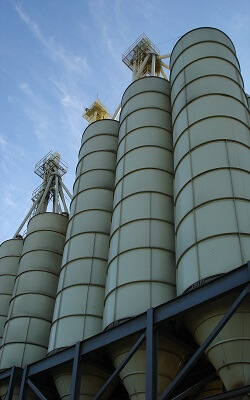
Two recent cassava mutations could expand considerably cassava’s use in industrial applications. The first, an induced mutation, has very small starch granules which offer a faster rate of hydrolysis – thus reducing the cost of producing ethanol or sweeteners – than other major starches. The second, a spontaneous mutation, produces an amylose-free “waxy” starch that has great advantages when used in frozen foods. Gels made from the starch have excellent water retention during defrosting, a highly desirable characteristic for the food industry.
Animal Feed
Both the roots and leaves of the cassava plant can be used as on-farm animal feed or as an ingredient in commercial animal feed. Because of their high cyanide content, however, fresh roots or leaves can be fed to animals only in very small quantities. Cassava roots are chipped or sliced, while leaves are chopped into small pieces. Before being fed to animals, the cassava pieces are spread out on a floor overnight in order to release some of the cyanide by evaporation. The root chips and leaf pieces can also be sun-dried to 12 to 14% moisture content, then stored for future use.
Alternatively, the chopped pieces of roots and leaves can be packed tightly in plastic bags or air-tight containers and fermented to make silage. Both sun-drying and ensiling will release most of the cyanide, making those products safe as feed for pigs, cattle, buffaloes and chickens.
[If you want to know about the business of cassava farming and processing, purchase our cassava farming business plan that will show you how to farm cassava and process into flour, starch, gari and chips.]
Dried cassava chips are produced by first washing, or at least slightly cleaning, the roots in a rotary drum to remove soil and some of the outer skin. The roots are then chipped and spread out on a concrete floor for sun-drying, and turned regularly with a rake to promote uniform drying. Normally it takes up to four days of sun-drying to make dried chips with about 12 to 14% moisture content.
In Viet Nam, cassava roots are often roughly peeled and sliced by hand before sun-drying in courtyards or along roadsides. In Thailand, many farmers take their cassava to drying yards, where the roots are first dumped into the hopper of a diesel-powered chipping machine. The chipped roots are then spread over large concrete floors for sundrying and turned over regularly by a vehicle with a large rake. After two or three days of drying, the chips are piled up by a grader and loaded in bulk onto trucks. Some are further processed into pellets, mainly for export.
Although the need for rapid chipping and drying adds to the complexity of production, small farmers in Asia and their marketing partners, who provide cassava chips for the animal feed export industry, have shown that with adequate infrastructure, smallholder produce can be dried locally and reach market chains with relatively low losses.
Chips are usually sold directly or milled into a powder that can be mixed with other ingredients – such as soybean meal, full-fat soybeans, fishmeal or other protein sources – to make a nutritious animal feed that is usually supplemented with methionine, vitamins and minerals. When the diet is well-balanced, in terms of energy and protein, the performance of pigs is very similar to that obtained with a diet based on maize or broken rice.
Cassava meal is highly digestible and naturally contaminated with lactic acid bacteria and yeast, which improve the micro-flora in the digestive tract of animals. At low levels, hydrogen cyanide in cassava feed increases the efficiency of an enzyme, lactoperoxidase, which is a natural antibiotic that kills mycotoxins in the animal’s body and milk. Animals raised on cassava diets have generally good health, good disease resistance and a low mortality rate. They require few if any antibiotics in their feed.
Dry cassava leaf meal (also known as “cassava hay”) is usually obtained by cutting the plant tops at 2.5 to 3-month intervals during the cassava growth cycle. The best quality foliage meal contains a large proportion of leaves and only very young stems, and is obtained from plants or shoots that are less than three months old. After harvesting, the foliage is chopped and spread out on a concrete floor for sun-drying. The moisture content needs to be reduced from about 70% to 12 to 14% so that the foliage can be milled and stored.
[If you want to know about the business of cassava farming and processing, purchase our cassava farming business plan that will show you how to farm cassava and process into flour, starch, gari and chips.]
Owing to its high fibre content, cassava foliage meal is suitable mainly for ruminants. Research has shown how supplementation with 1 to 2 kg of cassava hay per animal per day increases the milk yields of dairy cows and boosts levels of thiocyanate in the milk, which may enhance milk quality and storability. Condensed tannins in the foliage meal also reduces gastro-intestinal nematodes, indicating that the meal may act as an anti-helminthic agent.
For non-ruminants, dry cassava foliage meal is best limited to 6 to 8% of the feed for growing pigs and to less than 6% of that for broilers. In broilers, the inclusion of cassava foliage meal is useful mainly as a natural pigmenter – the high content of xanthophyll pigments (500-600 mg/kg) improves the pigmentation of skin in broilers and that of egg yolks.
Leaf silage is made by mixing chopped leaves with 0.5% salt and 5 to 10% cassava root meal or rice bran, and then placing the mixture in large plastic bags or air-tight containers. The leaves are compacted to expel all air and the bags are sealed. Under these anaerobic conditions, the leaves start to ferment, resulting in a sharp drop in pH, as well as in cyanide content. After about 90 days of fermentation, the silage is ready to be fed to animals, usually pigs and cattle. The silage can be stored in tightly sealed bags for at least five months without spoiling.
The ensiled leaves contain about 21% crude protein and 12% crude fibre. They also contain 200 ppm hydrogen cyanide, compared to more than 700 ppm before ensiling. In experiments conducted in Viet Nam, a diet containing 15% ensiled cassava leaves improved the daily weight gain of pigs and reduced their feed cost by 25%. Cassava farming and processing involves many moving parts so ensure to get insurance cover to protect against losses from unforseen events.
For more cassava farming information and insights, check our our Cassava Farming resource center.
And if you want to know about the business of cassava farming and processing, purchase our cassava farming business plan that will show you how to farm cassava and process into flour, starch, gari and chips.
[Ed.Note: Article references: Food and Agriculture Organization (FAO); International Institute of Tropical Agriculture (IITA)]
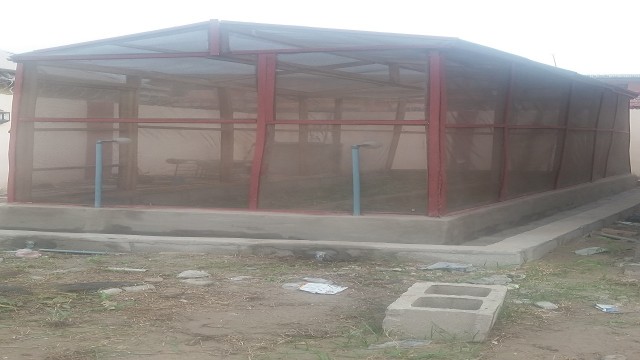



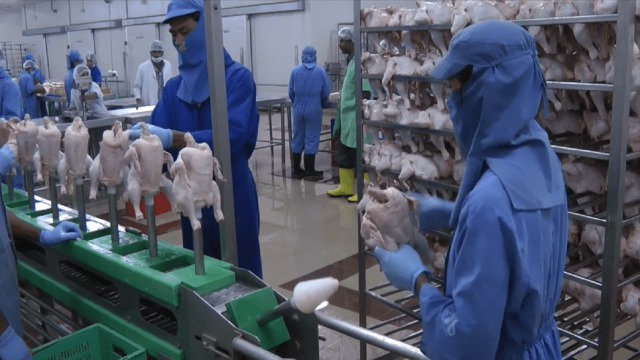




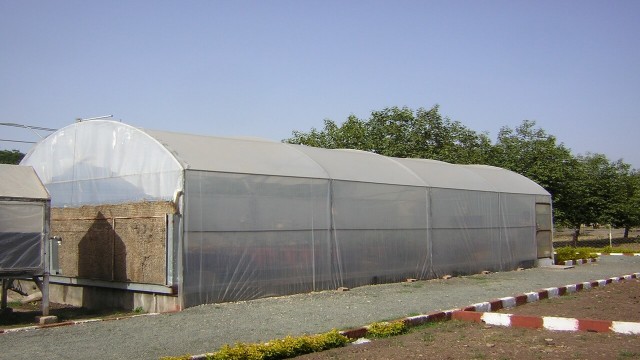

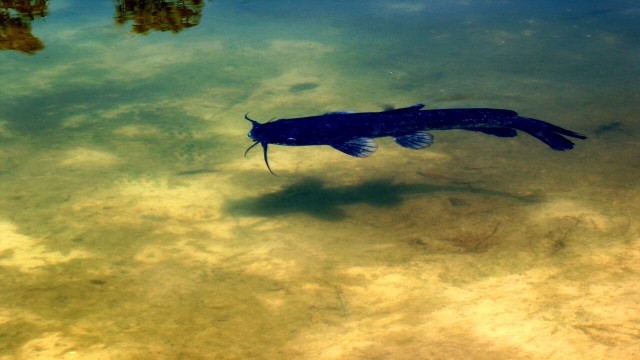
Share This Article: